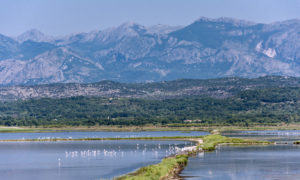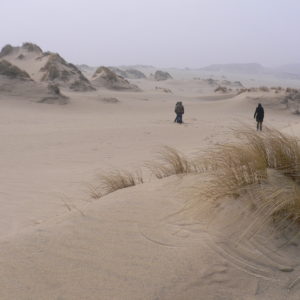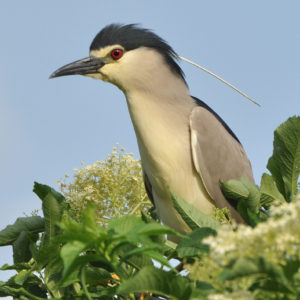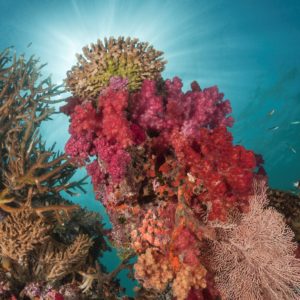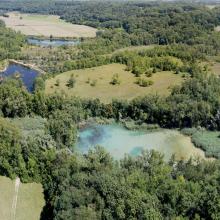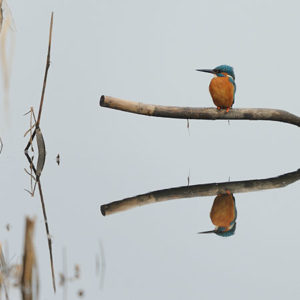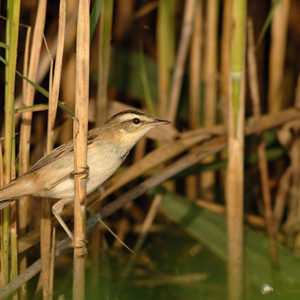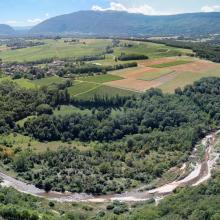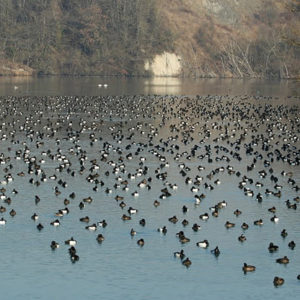Update
World Wetlands Day 2021
About
World Wetlands Day, celebrated each year on 2 February, marks the date of the adoption of the Convention on Wetlands (Ramsar Convention) on 2 February 1971 in Ramsar, Iran.
Importance of Wetlands
Wetlands are among the most diverse and productive ecosystems. They provide essential services and supply all our fresh water. Wetlands are land areas that are saturated or flooded with water either permanently or seasonally. Inland wetlands include marshes, ponds, lakes, fens, rivers, floodplains, and swamps. Coastal wetlands include saltwater marshes, estuaries, mangroves, lagoons and even coral reefs. Fishponds, rice paddies, and saltpans are human-made wetlands.
Wetlands are vital for human survival. They are among the world’s most productive environments; cradles of biological diversity that provide the water and productivity upon which countless species of plants and animals depend for survival. Wetlands are indispensable for the countless benefits or “ecosystem services” that they provide humanity, ranging from freshwater supply, food and building materials, and biodiversity, to flood control, groundwater recharge, and climate change mitigation.
Loss of Wetlands
The significance of wetland biodiversity was stressed recently in the Global Assessment Report on Biodiversity and Ecosystem Services by the Intergovernmental Science-Policy Platform on Biodiversity and Ecosystem Services (IPBES). The report identified wetlands as the most threatened ecosystem, impacting 40% of the world’s plant and animal species that live or breed in wetlands.
In addition, according to the World Heritage and Ramsar Conventions, 64% of the world’s wetlands have disappeared since the beginning of the last century. In most regions across the world, wetlands continue to decline compromising the benefits that wetlands provide to people. Therefore, the conservation of wetlands is a vital task of humanity, which can help achieving the Sustainable Development Goals by 2030.
Furthermore, though wetlands cover only around six per cent of the Earth’s land surface, 40 per cent of all plant and animal species live or breed in wetlands. It is worrying that they are disappearing fast due to human activities and climate change. According to the Global Wetland Outlook, we lose wetlands three times faster than natural forests.
2021 Theme
“Wetlands and Water” was the theme for 2021, highlighting the contribution of wetlands to the quantity and quality of freshwater on our planet. Water and wetlands are connected in an inseparable co-existence that is vital to life, our wellbeing and the health of our planet.
We are facing a growing freshwater crisis that threatens people and our planet. We use more freshwater than nature can replenish and we are destroying the ecosystem that water and all life depend on most – wetlands.
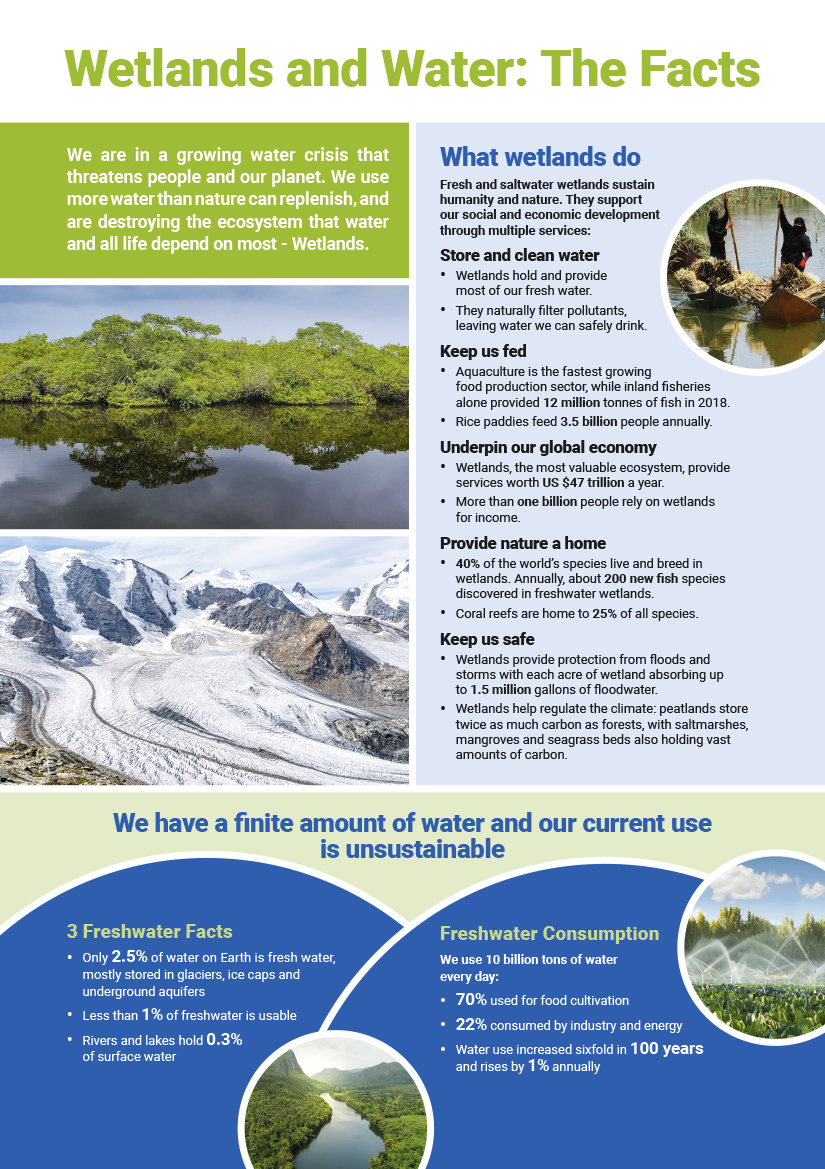
Role of Geneva
International Geneva
Geneva and its surrounding area host important international organizations working on wetlands.
Convention on Wetlands (Ramsar Convention)
The Convention on Wetlands (Ramsar Convention) is the intergovernmental treaty that provides the framework for the conservation and wise use of wetlands and their resources. The Convention was adopted in the Iranian city of Ramsar in 1971 and came into force in 1975.
Managing wetlands is a global challenge and the Convention presently counts 171 countries as contracting parties, which recognize the value of having one international treaty dedicated to a single ecosystem.
The Convention’s mission is the conservation and wise use of all wetlands through local and national actions and international cooperation, as a contribution towards achieving sustainable development throughout the world.
Under the “three pillars” of the Convention, the contracting parties commit to:
- Work towards the wise use of all their wetlands
- Designate suitable wetlands for the list of Wetlands of International Importance (the “Ramsar List”) and ensure their effective management
- Cooperate internationally on transboundary wetlands, shared wetland systems and shared species
“Wise Use” of Wetlands under the Ramsar Convention
At the centre of the Convention’s philosophy is the “wise use” of wetlands. When contracting parties accede to the Convention, they commit to work towards the wise use of all the wetlands and water resources in their territory, through national plans, policies and legislation, management actions and public education.
The Convention defines wise use of wetlands as the maintenance of their ecological character, achieved through the implementation of ecosystem approaches, within the context of sustainable development. Wise use can thus be seen as the conservation and sustainable use of wetlands and all the services they provide, for the benefit of people and nature.
Geneva Water Hub
Water insecurity is increasingly a cause of social and political instability threatening peace and security at all levels. The Geneva Water Hub aims at better understanding and preventing water-related tensions between competing uses, between public and private actors, and between political entities and countries.
International Union for Conservation of Nature (IUCN)
The International Union for Conservation of Nature (IUCN) works in support of the Ramsar Convention but also with grassroots communities and river basin agencies to implement wetland conservation as part of its water management work.
In 1985, IUCN together with WWF, started a major wetlands campaign called Life at the Water’s Edge. This campaign promoted the need for wetland conservation, produced a vast array of communication materials, and set out a clear wetland conservation programme.
IUCN also engages in water governance that integrates the needs of people and nature, the implementation of sustainable water resource management to secure water-related ecosystem services and conserve freshwater biodiversity, and support increased investment in ecosystems as natural water infrastructure.
In addition, IUCN’s Water for Climate Impact Programme aims to catalyse investment into aquatic ecosystems, particularly peatlands, wetlands and coastal ecosystems. The Peatlands Impact Call hopes to increase investment in peatland protection, management and restoration; demonstrate bankable business models that protect peatlands; strengthen local livelihoods whilst yielding financial returns, and; build partnerships for action, replication and scale.
The Economics of Ecosystems and Biodiversity (TEEB)
The Economics of Ecosystems and Biodiversity (TEEB) is a global initiative focused on making nature’s values visible. Its principal objective is to mainstream the values of biodiversity and ecosystem services into decision-making at all levels. It aims to achieve this goal by following a structured approach to valuation that helps decision-makers recognize the wide range of benefits provided by ecosystems and biodiversity, demonstrate their values in economic terms and, where appropriate, capture those values in decision-making.
This report on Water and Wetlands builds on the TEEB approach to generate a better understanding of the ecosystem service values of water and wetlands and encourages improved decision making and business commitment for their conservation, investment and wise use. The primary objective of the report is to help identify major gaps and inconsistencies in current knowledge of the economics of water and wetlands, so as to inform agenda-setting for further work on the economics of water and wetlands.
United Nations Water (UN Water)
The United Nations Water (UN Water) coordinates the efforts of UN entities and international organizations working on water and sanitation issues. All freshwater ultimately depends on the continued healthy functioning of ecosystems, and recognizing the water cycle as a biophysical process is essential to achieving sustainable water management.
WWF International
WWF International works to preserve wetlands around the world, with its efforts focused on the Ramsar Convention. For the last 20 years, WWF has been one of the Convention’s most committed partners, supporting the designation of 110 million hectares of Ramsar sites across the world. WWF also believes it is critical to bolster the Ramsar Advisory Missions (RAMs), which help countries identify and address the wetland challenges they face. RAMs need to be strengthened, supported, given adequate resources, and utilized by countries – as well as recommended by NGOs – to help ensure the ecological character of the world’s most important wetlands are maintained so that they continue to deliver benefits to both people and nature. In addition, WWF promotes climate change adaptation to help preserve and restore wetlands to buffer weather extremes and to integrate climate change considerations into wetlands and river basin management. WWF is working with local communities to assess their vulnerabilities to climate change and to develop strategies for climate adaptation.
Local Geneva
Canton of Geneva
Geneva celebrates World Wetlands Day each year by inviting the public to discover these natural spaces. Since 1991, the canton has hosted a site protected by the Ramsar Convention, a key area for biodiversity. In order to raise awareness of the value of this site, specialists representing different organizations involved in the safeguarding and monitoring of these spaces organize a series of activities and events led by ornithologists.
This year, the canton is offering 50 mini guides to encourage the public to observe the biodiversity and nature of wetlands in the region. In addition, they are organizing a photography contest showcasing local wetlands. Submit your entries until 10 February 2021 and win a pair of binoculars. More information on the Facebook page of the Department of Territory of the Canton of Geneva.
Ramsar Site: Rhône and natural valleys of the Allondon and the Laire
The Ramsar Site: Rhône and natural valleys of the Allondon and the Laire contains a section of the Rhône River in Geneva and downstream, extending from the lake south-westward to the French frontier. It includes the shores of Lake Geneva and riverbanks within the city, riverside areas of the Rhône and natural valleys of the Allondon and the Laire, the Rhône’s two main tributaries in the area. The Site forms a green corridor with a varied vegetation cover and habitats such as reedbeds, grasslands subject to seasonal inundation, scrub and alluvial woodland. The Site also includes some of the last remaining relatively unmodified stretches of the Rhône in Switzerland and is one of the most important wintering sites for waterbirds in the country.
Groupe des Jeunes de Nos Oiseaux
The Groupe des Jeunes de Nos Oiseaux brings together dozens of young people (up to 25 years old) who are passionate about birds, their observation in nature and their protection.
Groupe Ornithologique du Bassin Genevois
The Groupe Ornithologique du Bassin Genevois unites the ornithologists in the Geneva region and coordinates the various conservation projects of local birds. It also lists protected wetland sites for birdwatching in the canton and its surrounding area such as Marais de Sionnet and Les Teppes de Verbois among others.
Pro Natura
Pro Natura is the oldest nature preservation organization in Switzerland, with several protected sites with important wetlands such as the Centre Nature Vallon de l’Allondon and the Centre Nature de la Pointe à la Bise in Geneva.
UN Decade on Restoration (2021-2030)
The UN Decade on Ecosystem Restoration calls for the protection and revival of ecosystems around the world for the benefit of people and nature. It aims to halt the degradation of ecosystems, and restore them to achieve global goals. Only with healthy ecosystems, such as wetlands, can we enhance people’s livelihoods, counteract climate change, and stop the collapse of biodiversity.
The UN Decade runs from 2021 through 2030, which is also the deadline for the Sustainable Development Goals and the timeline scientists have identified as the last chance to prevent catastrophic climate change.
Led by the United Nations Environment Programme (UNEP) and the Food and Agriculture Organization (FAO) of the United Nations, the UN Decade is building a strong, broad-based global movement to ramp up restoration and put the world on track for a sustainable future. That will include building political momentum for restoration as well as thousands of initiatives on the ground.
Framework for Freshwater Ecosystem Management
The Third United Nations Environment Assembly passed a groundbreaking and comprehensive Resolution on protecting and restoring water-related ecosystems. In it, member states welcomed UNEP’s Framework for Freshwater Ecosystem Management, which supports countries to sustainably manage freshwater ecosystems. In doing so, it supports national and international goals related to freshwater ecosystems, such as certain Aichi Biodiversity Targets and Sustainable Development Goal 6, Target 6.6, which covers wetlands.
The theme for the next United Nations Environment Assembly (UNEA 5), the world’s highest decision-making body on the environment, slated for February 2021, is Strengthening Actions for Nature to Achieve the SDGs.
Events
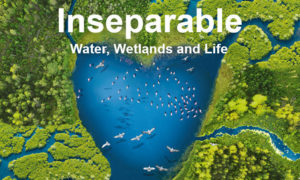
Panel Discussion | Wetlands: Securing Freshwater for All
1 February 2021 | 15:00 – 16:30 | Online | Ramsar Convention
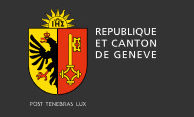
Photography contest "Genève célèbre les zones humides!"
Until 10 February 2021 | Facebook | Department of Territory, Canton of Geneva
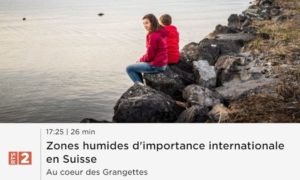
Zones humides d'importance internationale en Suisse - Au coeur des Grangettes
2 February 2021 | 17:25 – 17:50 | RTS2
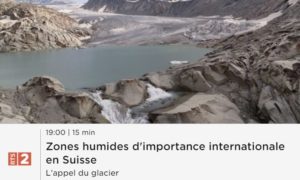
Zones humides d'importance internationale en Suisse - L'appel du glacier
2 February 2021 | 19:00 – 19:15 | RTS2
Learning
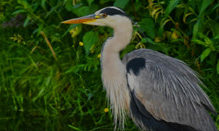
Introductory Course to the Ramsar Convention on Wetlands
Online | InforMEA
Resources
- Wetlands : Natural Solution to Climate Change | World Wetlands Day | 23 November 2020
- Global Priority Areas for Ecosystem Restoration | Nature | 14 October 2020
- Nature Hires: How Nature-Based Solutions Can Power a Green Jobs Recovery | WWF International and International Labour Organization (ILO) | October 2020
- Coastal Wetlands Emerge as a Critical Ecosystem for a Healthy Climate | The PEW Charitable Trusts | 1 September 2020
- Wetlands: Ultimate Biodiversity Hotspot | IUCN | 30 January 2020
- The Relationship of Indigenous Peoples and Local Communities with Wetlands | UN Water | 5 November 2018
- Multifunctional Wetlands | United Nations University Institute for Water, Environment and Health | February 2018
- Valuing Nature’s Water Infrastructure| The Economist | 5 June 2015

